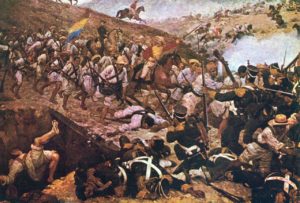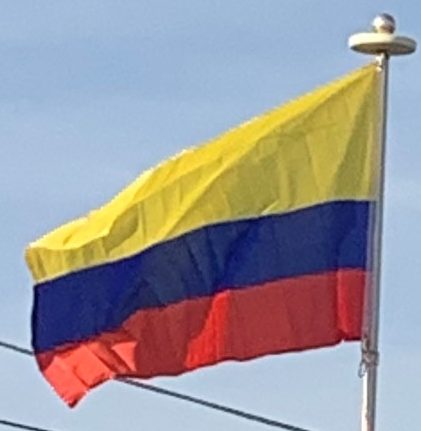
A movement was initiated by Antonio Nariño, who opposed Spanish centralism and led the opposition against the Viceroyalty. Cartagena became independent in November 1811. In 1811 the United Provinces of New Granada were proclaimed, headed by Camilo Torres Tenorio. The emergence of two distinct ideological currents among the patriots (federalism and centralism) gave rise to a period of instability. Shortly after the Napoleonic Wars ended, Ferdinand VII, recently restored to the throne in Spain, unexpectedly decided to send military forces to retake most of northern South America. The viceroyalty was restored under the command of Juan Sámano, whose regime punished those who participated in the patriotic movements, ignoring the political nuances of the juntas. The retribution stoked renewed rebellion, which, combined with a weakened Spain, made possible a successful rebellion led by the Venezuelan-born Simón Bolívar, who finally proclaimed independence in 1819. The pro-Spanish resistance was defeated in 1822 in the present territory of Colombia and in 1823 in Venezuela.
The territory of the Viceroyalty of New Granada became the Republic of Colombia, organized as a union of the current territories of Colombia, Panama, Ecuador, Venezuela, parts of Guyana and Brazil and north of Marañón River. The Congress of Cúcuta in 1821 adopted a constitution for the new Republic. Simón Bolívar became the first President of Colombia, and Francisco de Paula Santander was made Vice President. However, the new republic was unstable and three countries emerged from the collapse of Gran Colombia in 1830 (New Granada, Ecuador and Venezuela).
Colombia was the first constitutional government in South America, and the Liberal and Conservative parties, founded in 1848 and 1849, respectively, are two of the oldest surviving political parties in the Americas. Slavery was abolished in the country in 1851.
Internal political and territorial divisions led to the dissolution of Gran Colombia in 1830. The so-called “Department of Cundinamarca” adopted the name “New Granada”, which it kept until 1858 when it became the “Confederación Granadina” (Granadine Confederation). After a two-year civil war in 1863, the “United States of Colombia” was created, lasting until 1886, when the country finally became known as the Republic of Colombia. Internal divisions remained between the bipartisan political forces, occasionally igniting very bloody civil wars, the most significant being the Thousand Days’ War (1899–1902).
20th Century:
The United States of America’s intentions to influence the area (especially the Panama Canal construction and control) led to the separation of the Department of Panama in 1903 and the establishment of it as a nation. The United States paid Colombia $25,000,000 in 1921, seven years after completion of the canal, for redress of President Roosevelt’s role in the creation of Panama, and Colombia recognized Panama under the terms of the Thomson–Urrutia Treaty. Colombia and Peru went to war because of territory disputes far in the Amazon basin. The war ended with a peace deal brokered by the League of Nations. The League finally awarded the disputed area to Colombia in June 1934.
Soon after, Colombia achieved some degree of political stability, which was interrupted by a bloody conflict that took place between the late 1940s and the early 1950s, a period known as La Violencia (“The Violence”). Its cause was mainly mounting tensions between the two leading political parties, which subsequently ignited after the assassination of the Liberal presidential candidate Jorge Eliécer Gaitán on 9 April 1948. The ensuing riots in Bogotá, known as El Bogotazo, spread throughout the country and claimed the lives of at least 180,000 Colombians.
